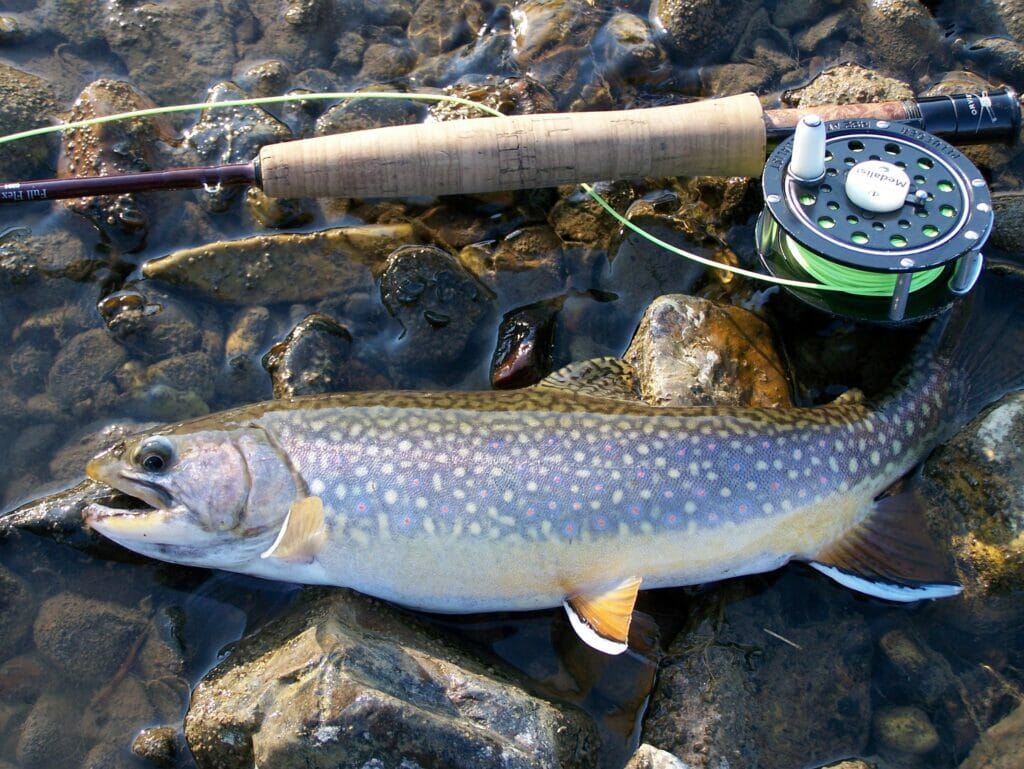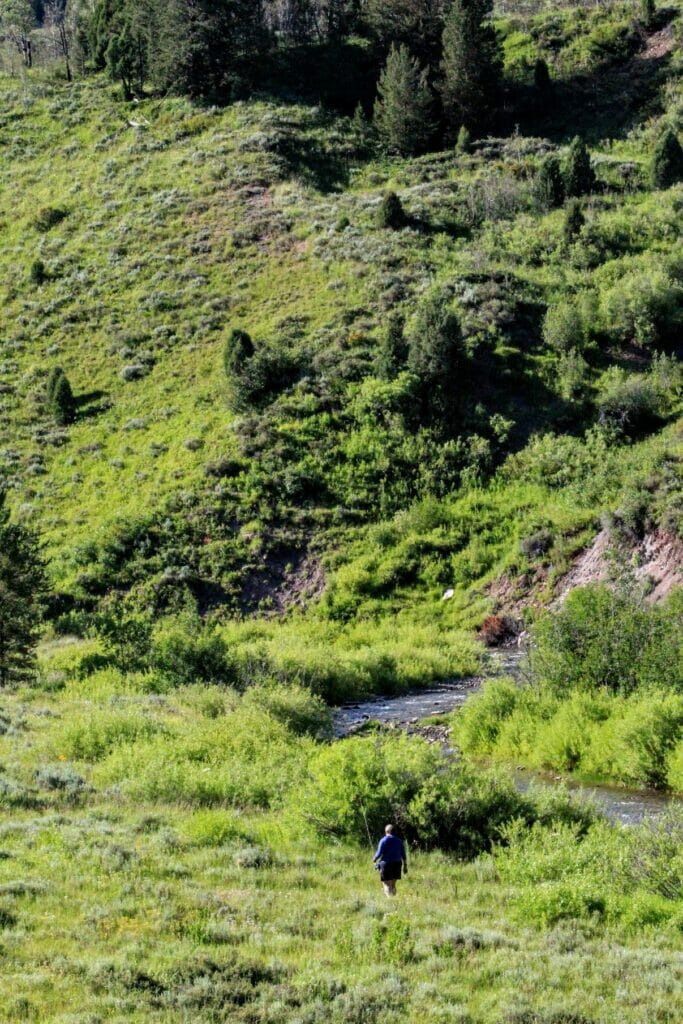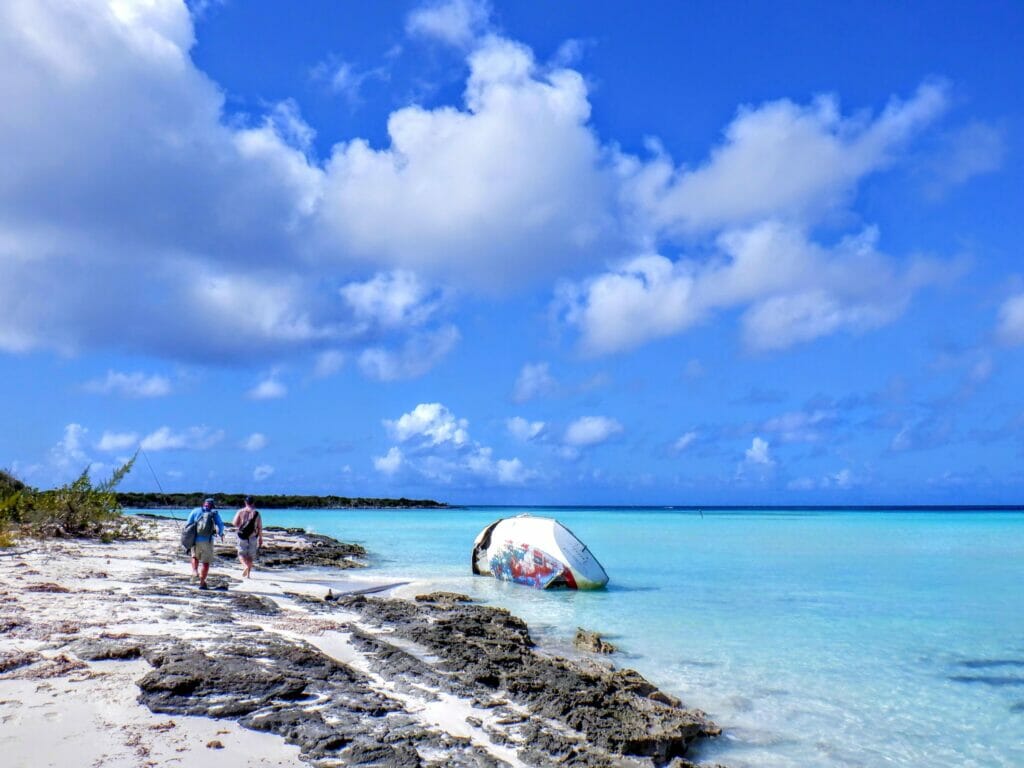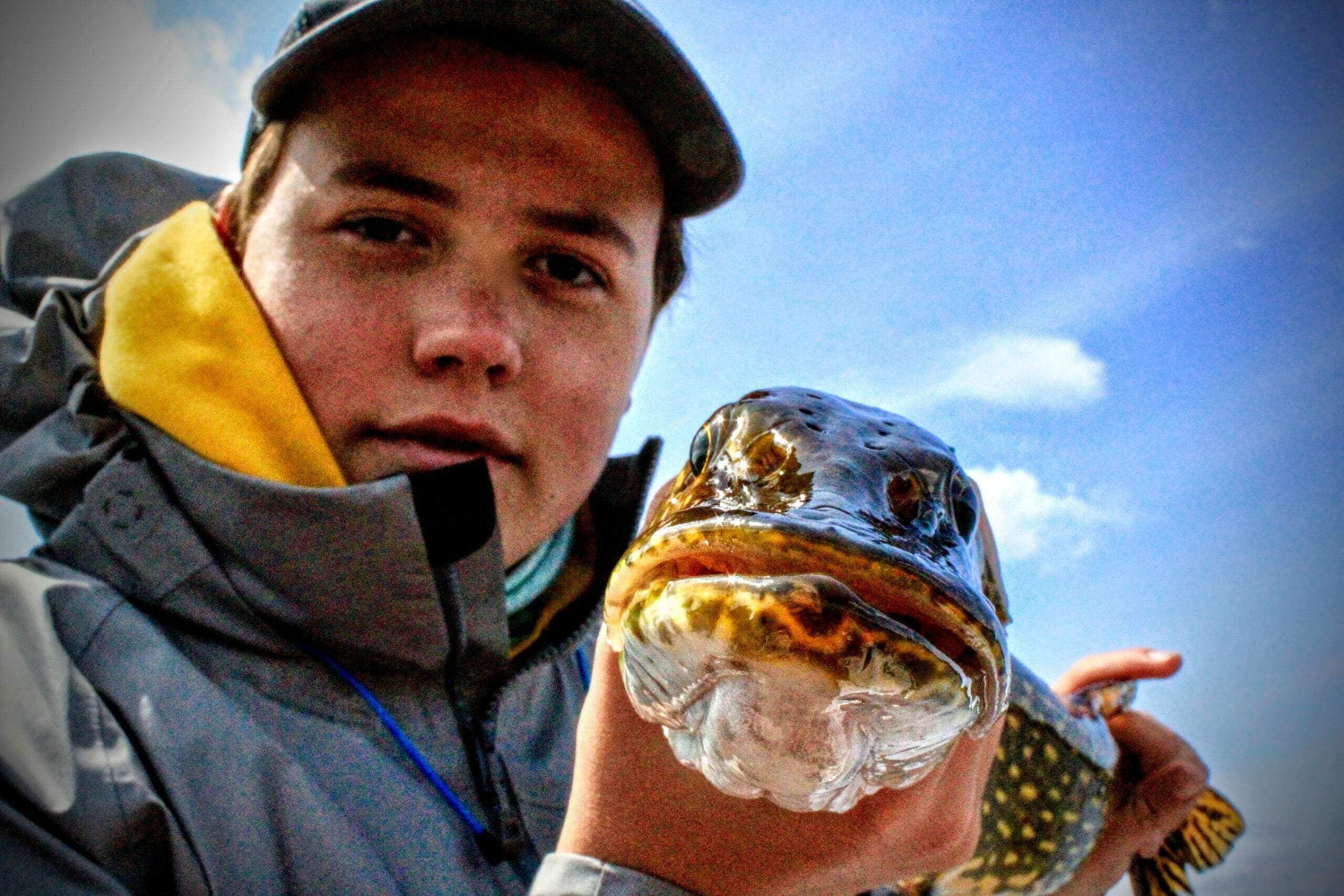When rivers are too warm to safely chase trout, consider other species, like pike and bass. Chris Hunt photo.
Editor’s note: The West is amid its worst drought in decades, and the Southwest is suffering through its worst drought in recorded history. Trout in the West are feeling the pain — the Colorado River’s upper reaches are drying out, and the fabled Smith River in Montana reached its lowest recorded flows in the 29-year history of the Eagle Creek gauge (116 cfs), making it virtually impossible for anyone to float the 59-mile stretch of trout water. Low water means warm water. In Colorado, the Yampa River tailwater section below Stagecoach Reservoir is closed to fishing due to high water temperatures that normally wouldn’t hound the river until August. This summer, trout fishing might be impossible for many Western anglers. But there are other angling opportunities. We asked a host of Trout Unlimited anglers what they’re doing in response to the heat in order to give trout a break this summer.
High-country streams, bass, carp and … invasive brook trout
I’m fortunate. I have several options, both when it comes to trout and when it comes to other species I can chase when water temperatures and drought combine to make it unwise to chase trout here in eastern Idaho. First, some of our best trout fisheries are tailwaters — the Henry’s Fork below Island Park Dam and the South Fork of the Snake below Palisades Dam — which makes them cold enough to keep trout on the angling menu, at least for now. But there’s a question of pressure, because other rivers in the region are struggling with warm water, which is sending more anglers our way.
This time of year, when the “drift boat hatch” is going great guns on the South Fork, you can generally find me higher up in the mountains, sacrificing size for opportunity. Small-stream trout aren’t nearly as big and burly as their big-water cousins, but the scenery is incredible and the isolation is even better. That said, we’ve also had what I think might be the warmest June I can remember in 22 years of living here, and it’s taking its toll on our higher, smaller trout streams (just last week, one of my favorite small streams hit 64 degrees — unthinkable in years past). The time may come in the weeks and months ahead when I’m forced to give trout a break altogether and, as my friend Scott Yates, director of TU’s Water and Habitat Program, said, “keep praying for rain.”

I can chase other fish, of course, like carp and smallmouth bass lower down in the Snake drainage, and we have a couple of lakes where bass and bluegill will hit a fly. I also live in an area that’s been invaded by non-native brook trout, so going after delicious brookies is always a fun diverstion, and they tend to live in really cold, clean water up higher in our drainages. I’m just not ready to throw in the towel yet. Maybe my prayers will be answered.
— Chris Hunt, managing editor, TROUT Magazine digital
Track the flows and the temperatures
My summer fishing plans have changed significantly since those short winter days dreaming of my favorite places to visit with family and friends during the summer. My only plans still in place are to large rivers behind dams.
I have a trip to Montana coming up and I’ll be watching the water and air temperatures and deciding whether to still visit the rivers I had hoped to or adjusting the plans to include lake fishing instead. The thermometer in my fishing backpack is going to get a workout this year. My 12-year-old has been dreaming about fishing his “honey hole” since he got his own fly rod in January for his birthday. I let him know months ago we may not be able to visit his favorite spot this summer, but I will track the flows and temperatures and we will likely still visit the river to see how it is holding up.
On a professional level, the entire TU staff in Utah, along with the Utah Council and chapters, are working to get the word out that letting certain fisheries rest to protect loss is something all anglers should do. How to handle fish properly if you practice catch and release is something anglers should know, as well. We have also let the Utah Division of Wildlife Resources know we are on call for fish rescue efforts in places where it makes sense.
— Brett Prettyman, communications director for TU’s Headwaters, Science and Water and Habitat programs
Learn more about the plants and animals along the stream
Luckily, I live in the really high country and can access high mountain streams and lakes with some effort, which I appreciate. I love those adventures, but I do expect them to be busier than usual.

When I’ve had my fill of the crowds, I think I’ll learn more about the surroundings around my favorite streams. I’ve been studying edible and medicinal plants in my area, so I’ll do a bit more research and see what is worth harvesting (if there’s abundance of that variety) and how to best use it. I’m also interested in the birds that I frequently see on the streams. I’ve never known names or specific calls, but I hope to learn through apps or connecting with friends who are birders to learn more.
While I love fooling trout as much as the next person, this great big world offers so much to those willing to look just a bit deeper.
— Kara Armano, TU’s southwest region communications director
Keep the thermometer busy and check out some bass ponds
I’m with Brett on this: my thermometer is going to be doing dips constantly this summer. And when the stream temp exceeds 65 degrees, I’m stowing the rod and my “trout fishing” will become “trout watching.” I plan to take a snorkel and GoPro, and small field glasses, with me everywhere this season.
Here on the Western Slope of the Sierra, I have reasonable access to high-country waters, so I should be able to find some backcountry creeks and lakes that are fishable with an easy conscience. But this summer I probably won’t fish any streams that are getting a lot of angling pressure, or whose flows are miniscule, and I’m going to put more emphasis on stillwater fishing, for pretty much anything that’ll take a fly. There are some reputable bass ponds that I’ve been meaning to check out (tugging poppers for largemouth is always satisfying).
We can’t be hypocritical in conditions like these — if we care as much or more about the existence (and survival) of the fish family salmonidae than about slinging a hook at them, we need to adjust our angling practices and expectations until things cool down again.
— Sam Davidson, TU’s California and Oregon communications director
Check out the Southeast … or take that saltwater trip
I know that many of us, myself included, have our eyes set to the West this time of year. We have hatches and dry flies on our mind. Thoughts of trout sipping the surface and of delicate precision casts delivering the perfectly selected fly to the perfectly presented drift fill our hearts and minds.
I have news for you — this just may not be the year. We have to be good stewards; we must protect our streams and fish populations, and sometimes that means not doing the thing in the place that we love.

But, I also offer you an alternative. Have you considered the Southeast? Arkansas, North Carolina, South Carolina, Georgia, Tennessee, and the Virginias all offer some amazing trout fishing. I would ask you to consider picking up a book by Harry Middelton, a true southern gentleman. In the lines of his stylish and thoughtful storytelling one can glean much inspiration and direction on how to approach this region.
Not interested in the Southeast, maybe this is the year to get a taste of salt that you’ve been craving. Either way, consider the options and do the right thing.
— Josh Crumpton, Founder, Spoke Hollow Outfitters, TU trustee
Bass and inshore fish … or dunk bait for flatheads
Thanks, Josh, for mentioning Virginia among other states in the Southeast. We have some good tailwaters in the region, though the lower stretches of trout water can get iffy with water temps. A lot of our small, high-elevation streams in the Blue Ridge stay plenty cool even through the hottest days of summer. That said, low water levels often become an issue late in the summer and early fall — making for difficult fishing — so I usually take a break from small streams.
Smallmouths in the New and James rivers (and some of their tributaries) are a blast. I also love casting little poppers for sunfish in the evenings in our local lakes and will get to the coast a couple of times to target cobia, flounder, croakers, red drum, and such. My summertime guilty pleasure? Taking my old bass boat — passed down to me from my late father-in-law — out to Smith Mountain Lake and soaking live bait on the bottom for catfish. There is just something awesome about the sound of the reel clicker screaming when a big flathead comes calling.
— Mark Taylor, TU’s eastern region communications director
Pike and bass on old-school crankbaits
I have been fishing for pike and bass on lakes with crankbaits and having a ball. But I still go to the trout rivers now and then just to spot fish, without bringing a rod at all. I call it “troutwatching.” Think of it like birdwatching, but with polarized glasses instead of binoculars.
— Kirk Deeter, Editor-in-Chief, TROUT Media.



